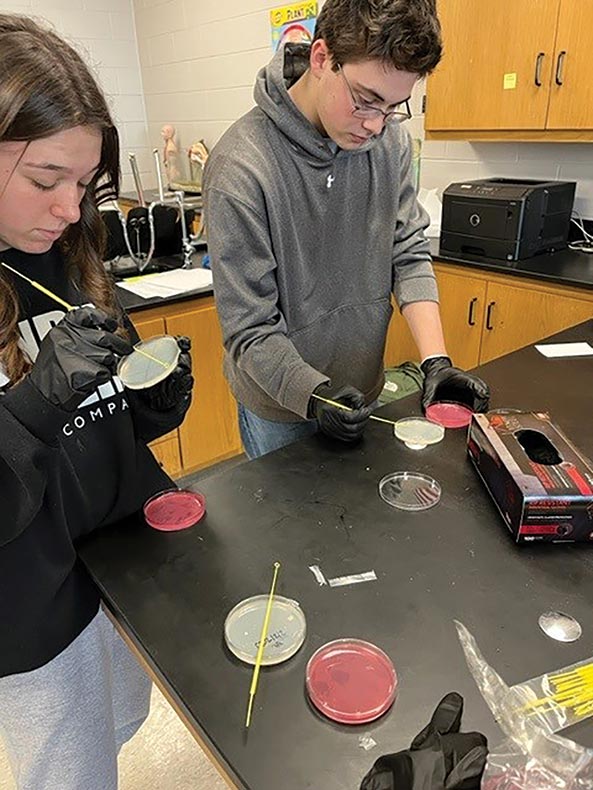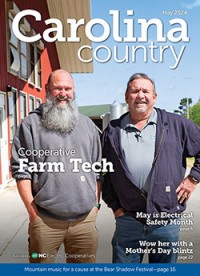Each year, South River EMC awards over $50,000 in Bright Ideas grants to schools.
These grants are used for any number of projects in any field to help meet the needs of students regarding curriculum and behavior. "I have applied for and won several Bright Ideas grants and I am so thankful for their support," said Dayna Nemr, a third-grade science teacher at Hargrove Elementary.
"I have received one to create class books that were published, for students and parents, a grant for STEM Legos, and a grant for a math hands-on center."
Her most recent grant enabled her students to get a more in-depth understanding of the solar system by visiting the Fayetteville State University planetarium. STEM, or science, technology, engineering, and math, is a topic with a lot of history, but has definitely gained momentum in the last 20 years.
STEM programming prepares students for a changing career field, while also giving them a more hands-on approach to learning.
However, schools have not had the funding in their budgets to provide all the different project ideas, in particular, science.
“Our school tries to buy what we need to teach science well,” said Long Hill Elementary teacher, Laura Myers. “However, I do not know that there is much money available to any school in the county to buy additional science materials.”
One teacher wrote a Bright Ideas grant for gel electrophoresis, a laboratory method used to separate mixtures of DNA, RNA, or proteins according to molecular size.
"It is widely used in molecular biology, biochemistry and genetics," said Cape Fear High School teacher, Kathy Lee. "It also plays a critical role in the diagnosis of genetic disorders, forensic science, and in the identification of microorganisms."
Many teachers expressed that their projects would not have been possible without a Bright Ideas grant.
This grant allowed students to learn how to properly use equipment, gain experience with genetic patterns and inheritance, become familiar with common genetic disorders as well as considering some of the ethical dilemmas inherent in genetic testing. It gave them the opportunity to look into a career they might be interested in moving into as well.
STEM is in schools from kindergarten through high school, with it meaning a little different lesson for each one. "In third grade, we teach forces and motion along with energy; we also teach the moon and its phases," said Myers.
"In addition, we teach plants and soil and we also teach the states of matter and how they change."
Midway High School received several grants this past Bright Ideas season to give students more of a hands-on approach.
Vernon Blackman, automotive instructor at Midway High, wrote his grant to supply the school shop with upgraded and advanced electronic equipment to teach students how to properly diagnose starting and charging systems on newer vehicles, and also other types of electrical issues related to new and advanced vehicles.
“This equipment is what students most likely will see in the industry if pursuing a career in automotive repair,” said Blackman.
"Organisms in Our Body" was written by Susan Citro, also from Midway High. The grant was intended to take students through a scientific journey to discover what microbes are naturally occurring in our bodies and in nature.
They learned about sample handling, preparing samples in a lab environment, and were able to watch those organisms grow.
"This grant allowed students the ability to have hands-on experience like a microbiologist would in a laboratory," said Citro. "They learned aseptic technique, the importance of proper sampling, how to prevent contamination of samples, and identification of the microorganisms that we come in contact with every day."
A grant entitled "Discover Plantology" was awarded to Tracy Byas, an extended course of study teacher at Western Harnett High.
"Each class received a set of herbs to watch grow," said Byas. "We used them to make a pot of spaghetti. The students loved pinching off the herbs and placing them into the pan of meat/sauce."
Lessons were tailored to the students' abilities, those with higher capability cooked, while others used graphs and tracked growth of their plants. They also learned how watering their plants and turning them for sun, impacted their growth.
Many teachers expressed that their projects would not have been possible without a Bright Ideas grant.
Apply now
The Bright Ideas grant program has funded thousands of projects impacting 3.5 million students across the state. Teachers in public, K-12 schools can apply online until Sept. 15, 2023.



